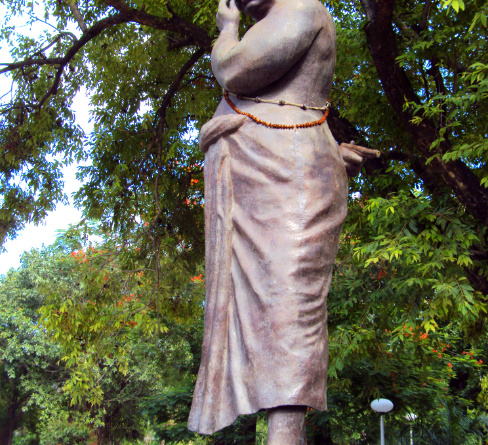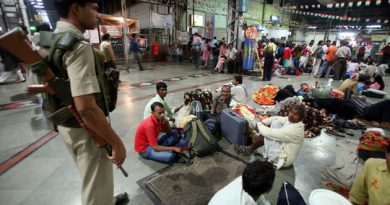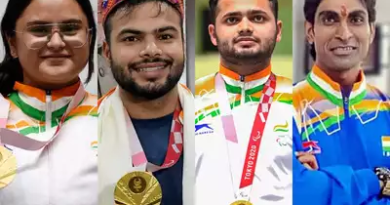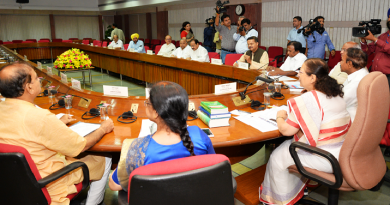CHANDRASEKHAR Azad and the Soul of India’s Freedom Movement
India’s fight against colonial rule was a long and difficult one. Apart from the need to overcome the brutality of an alien regime, the national leaders of the time had the daunting challenge of preparing the poor and disorganized people of our sub-continent for this fight. The most significant aspect of our struggle against foreign domination was the ability of our leaders to lift the people out of their ignorance and the resultant resurgence of the idea of an Indian nation. It is now well documented that the process of nation building preceded the actual, physical struggle of our freedom fighters, it continued through the most active phases of national movement and for that matter, continues even today – decades after Independence was won. The fight to revive the soul of the nation was first taken up by the brave-hearts like Lion of Punjab – Lala Lajpat Rai, Lokmanya Bal Gangadhar Tilak and numerous early revolutionaries of Bengal. The basic idea of the revolutionaries was to stir the soul of the country, awaken the fighting spirit of the nation, and reminds the people of their past glory and to show them that the time has come to stand up and be counted. In this journey of awakening of India’s pride and self-belief, the earnest and impatient youth took up the challenge thrown by the Jallianwallan Bagh (1919) and the setback of the first Gandhian movement (1922) by demonstrating individual bravery of exceptional order. During this period one of the most momentous event was the coming together of many talented and brave revolutionaries under one organizational umbrella – the Hindustan Socialist Republican Association in October 1924 in Kanpur. This new organization saw the loose association of such great revolutionaries as Ramprasad Bismil, Jogesh Chatterjee, Chandrashekhar Azad, Yogendra Shukla, Sachindranath Sanyal, Ashfaqullah Khan, Roshan Singh, Rajendra Lahiri, Bhagat Singh, Bhagwati Charan Vohra and Sukhdev. Over the next decade, most of these names captured the imagination of the nation and stirred the conscience of the masses. That they could instil awe and fear in the heart of the British Raj is no mean achievement, considering the sheer strength of the colonial power which then was at its peak of global influence. Even in this illustrious group of revolutionaries, the name of Chandrasekhar Azad shines through. In some senses, the image of moustache twirling youth from the heart of India struck cord with the people. Here was a young boy in his twenties who had the guts and the ability to bring down the powerful colonial police to its knees. In a series of revolutionary acts through the twenties, Chandrasekhar Azad and his friends kept themselves in the news. At times when open civil disobedience programmes were not possible due to police repression of highest degree, these revolutionaries kept the hopes alive of eventual victory for millions of Indians.Three important aspects of work of Azad makes him unique – his ability to evade capture and remain a “free” man till his death is perhaps the most important. The very name – Azad or free – casts an aura of the post-independence Indian. His very name and his knack of being one arm away from the police made him the darling of the country. His final, solitary stand against a posse of policemen at Allahabad’s Company Garden or Alfred Park – now aptly named Chandrasekhar Azad Park – represents the undaunted and free spirit of the man – an inspiration for generations to come. That he was betrayed by some of his colleagues adds to his mystique – for such treachery was all too common in those days. The message in his death was: living and dying a free man was worthy goal in life. Many have emulated him in making supreme sacrifice for the nation since then.The second aspect of Azad’s personality was that he was an iconic figure that rose above his caste or religious identity. Changing his surname name to Azad was but the starting point of that process. It is said that at the age of 15, when he was first detained by the police, he gave his name as Azad and his father’s name as Swatantrata. In all the facts, legends and folklore associated with him, nowhere does his religion or caste come into picture. He was an Indian first and last. That was, and is, a very unique aspect of his personality.The third aspect of Azad, shared by his friends in the Hindustan Republican Association (HRA) was a clear vision of why they were doing what they were doing and what they wanted a free India to be. Thus for instance, when Azad and his friends robbed government property to collect funds, the idea was always twofold – one, to undermine the authority of the British police and two, to build an organization that could stand up to the colonial rule. Aligned with their noble and selfless ideals of creating a just and equal India, these robberies were seen by the people in a similar light as Robin Hood – not as acts of criminality, but of rebellion against injustice. During the long periods when Azad lived undercover, mostly near Jhansi, he took on the role of teacher and taught children of the poor in the nearby villages.Chandrashekhar Azad did not die. He lives on in our hearts. He can be seen, alive and confident, in Chandrasekhar Azad park, twirling his mustachios, musing with satisfaction at the great distance India has travelled since his times. However, looking closely at the iconic statue, one can also detect a hint of worry on his forehead. It seems as if he is wondering if we have become too complacent about our hard won freedom and about the work that still needs to be done to fulfil his dream of building a nation that is strong and just.(courtesy Press Information Bureau)




